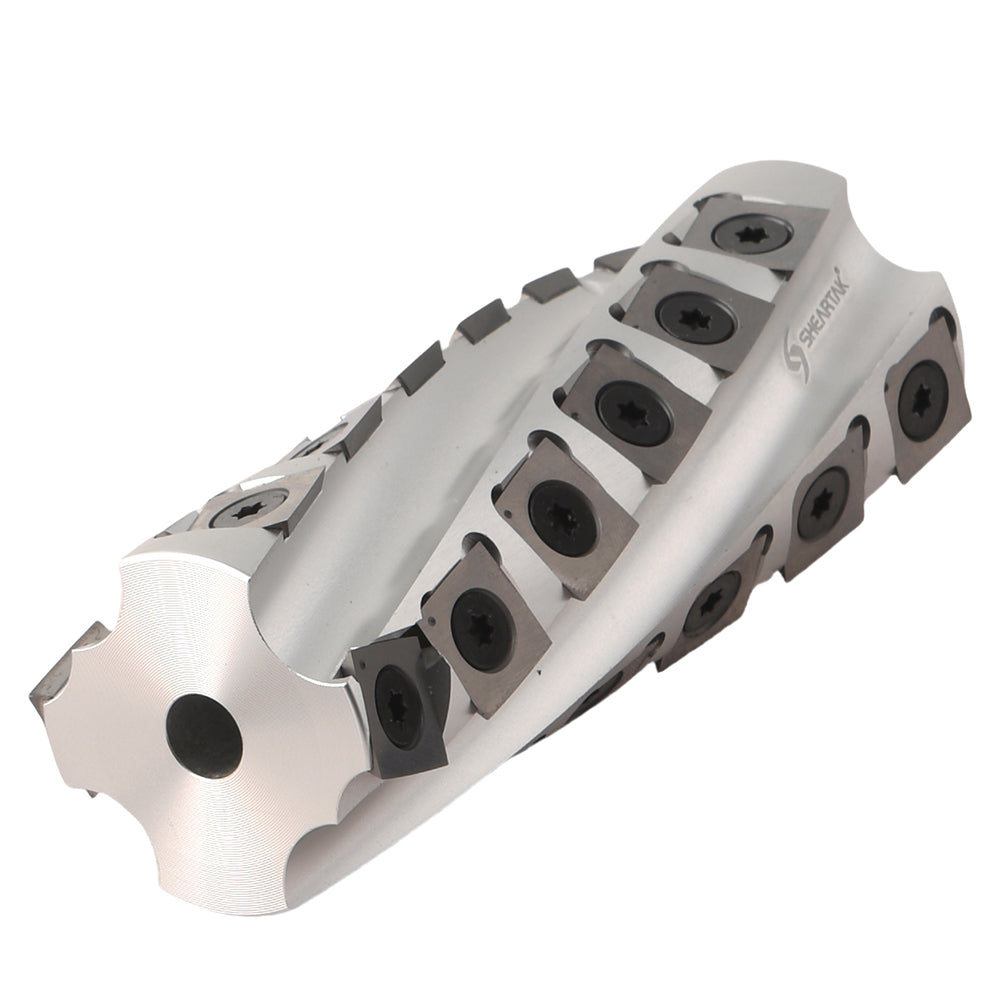
Why Upgrade to a Spiral Cutterhead? Quieter Operation, Cleaner Cuts, and Longer Life
If you've ever used a traditional straight-knife jointer or planer, you know the sound: a loud, aggressive chopping noise followed by inconsistent surface quality—especially on tricky grain. Upgrading to a spiral cutterheads can transform your woodworking experience, offering quieter performance, smoother cuts, and long-term cost savings.
In this article, we’ll explore the top benefits of spiral cutterheads and why they are a smart upgrade for your jointer or planer in both performance and precision.

1. Reduced Noise with Staggered Carbide Inserts
One of the most noticeable improvements is the noise reduction. Traditional cutterheads use long knives that strike the entire width of the board at once, creating a loud “slap” with every rotation. In contrast, spiral cutterheads use indexable carbide inserts arranged in a helical pattern. This staggered cutting action means:
- Only one or two inserts engage the wood at a time
- Vibration is minimized
- Noise is reduced significantly
This staggered cutting action results in a rolling, whisper-like cut rather than a jarring impact. Whether you’re running a small workshop or using your planer at home, a quiet planer makes a huge difference in comfort and focus.
Shearing Action for Cleaner Cuts
2. Superior Surface Finish with Shearing Action
Beyond being quieter, spiral cutterheads also produce a noticeably smoother finish. Why? It’s all in the shearing angle.
Each insert is mounted slightly askew, slicing the wood at an angle rather than striking it head-on. Think of it like using a sharp hand plane versus a chisel — the shearing motion:
- Creates a cleaner, more refined cut
- Minimizes tear-out on figured or reversing grain
- Leaves fewer ridges and less post-sanding
Even on tricky hardwoods like curly maple or knotty pine, spiral cutterheads provide consistent, professional-looking results.
3. Long-Lasting, Low-Maintenance Performance
Traditional knives need frequent sharpening, and when they dull, the entire head needs to be reset and aligned—a time-consuming process.
Spiral cutterheads use Long-Lasting Carbide Inserts that:
- Last much longer than high-speed steel
- Maintain a sharp edge over extended use
- Can be rotated 4 times before replacement

This not only reduces downtime but also ensures consistent cutting quality over time—making spiral heads a cost-effective choice in the long run.
4. Less Vibration, Better Results
Because the cutterhead is balanced and the cutting force is distributed across multiple inserts, there is significantly less vibration. This improves:
- Accuracy of cuts
- Places less stress on both the machine and the material
- Produces smoother, chatter-free surface
- Machine lifespan
A spiral cutterhead upgrade results in smoother, more consistent passes with less wear and tear on your equipment.
5. Dust Collection Improvements
Traditional heads produce long wood shavings that can clog dust collectors. Spiral cutterheads create smaller chips, improving dust collection efficiency and keeping your work area cleaner.
Final Thoughts
If you’re looking for the best planer or jointer cutterhead upgrade, a spiral cutterhead is a worthwhile investment.
They run quieter, cut cleaner, and require less maintenance thanks to their staggered carbide inserts and shearing action. While the upfront cost is higher, the long-term benefits—like smoother finishes, less tear-out, and minimal downtime—make them a smart investment for better results and a better shop experience.
Explore our full collection of spiral cutterheads HERE!
Most Popular Models:
- SPIRAL CUTTERHEAD FOR DEWALT DW735 13"
- SPIRAL CUTTERHEAD FOR METABO DH330
- SPIRAL CUTTERHEAD FOR SHOPSMITH PLANER
Upgrade your planer or jointer today and experience the Sheartak difference!


Leave a comment